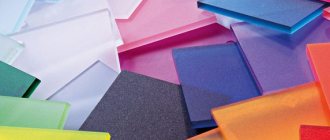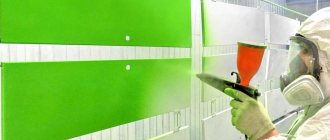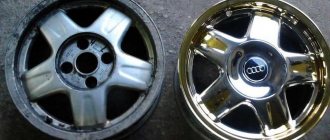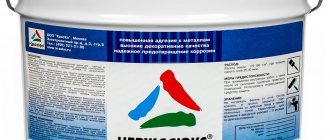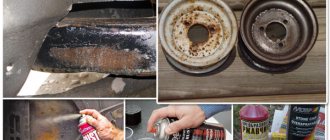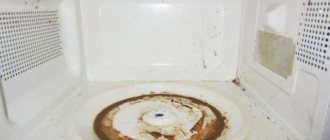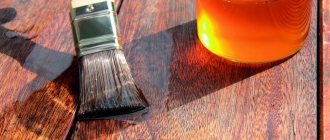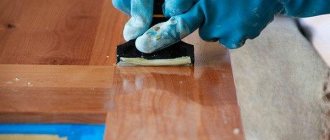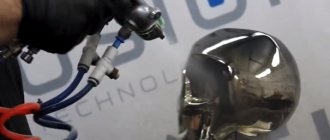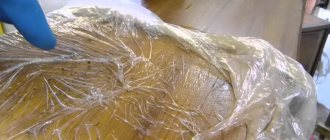Description and purpose of phosphating technology
Phosphating steel is the treatment of metal elements with substances, the main component of which is phosphate salt. A high-strength film is formed on the product, which has low electrical conductivity and prevents the occurrence of corrosion. Due to the significant improvement in adhesive properties, the technology is also widely used as a preparatory step for metal elements before painting.
Phosphating is practiced for low-alloy and carbon steels, cast iron, aluminum, zinc, cadmium, and copper-based alloys. On elements made from high-alloy grades, a low-quality protection layer is formed.
General properties of coatings
It should be noted that any phosphate solution must be prepared with the addition of zinc.
In this case, the composition is more efficiently fixed to the very base of the metal. During this process, in some cases, a variety of salts can be formed, which, as a rule, precipitate.
During preparation of the composition, salt sediment should be periodically removed. The finished phosphate-based coating must have certain properties.
Video:
First of all, the metal coating must have a minimum number of through pores. In addition, its structure must be finely crystalline.
You should also pay attention to the specific gravity of the film, which should not exceed three grams per square meter.
Several different phosphating methods are currently used. First of all, it should be noted normal phosphating, which is carried out at temperatures close to boiling temperatures.
This method makes it possible to obtain a film with a thickness of up to seven micrometers, however, in some individual cases the mechanical properties of the processed material are reduced.
Also, very often, steel is processed using cold phosphating, in which the film has a minimum thickness and, accordingly, has low protective properties.
IMPORTANT TO KNOW: Technology for stamping sheet metal parts
Protection can also be performed by accelerating phosphating, in which a special accelerator is introduced into the composition, which significantly reduces the overall process time. In any case, when the phosphating line is carried out, the entire metal base is cleaned of corrosion products and all kinds of fatty deposits using various groups of solvents.
Properties and advantages of phosphate coating
Phosphated metal parts can be operated under the influence of various factors:
- high humidity;
- synthetic oils and paints;
- organic chemically active substances;
- voltage up to 1000 V.
Thanks to phosphating, the wear resistance of surfaces that are in constant interaction at friction units is significantly increased.
The layer formed on the surface of steel, copper, aluminum and other metals creates reliable protection in the above conditions, but cannot resist alkalis and acids, or water vapor. Therefore, it is necessary to identify in advance the features of using a metal product subjected to phosphating.
The essence of the process
The principle of the phosphating process lies in the formation on the surface of a layer of sparingly soluble metal phosphates - the material used to manufacture the part to be processed.
The reaction produces three types of salts:
- monosubstituted phosphates;
- dihydrogen phosphates;
- phosphates.
During phosphating, phosphates are formed and the metal liquefies.
Mono-substituted salts arise during the initial contact of the acid and the metal. Upon subsequent contacts, di- and tri-substituted salts appear.
The main elements of the layer include poorly soluble phosphates, the parameters of which are determined by the free and basic acidity of the substance used, the origin of the cations, and the amount of monophosphates in the volume of the layer.
To speed up the film formation process, it is recommended to include oxidizing ions (ClO₃, NO₂, NO₃) in the working fluid.
Types of phosphating
Phosphating is performed in the following ways:
- immersing the elements in a container filled with active liquid;
- dispersion in the chamber;
- applying a phosphating primer.
A specialized phosphating line increases labor productivity when processing metal elements in mass production.
Cold (low temperature)
The technology involves surface treatment at 20–40 °C. Cold phosphating is performed using one of the following methods:
- The tank is filled with liquid, into which the required amount of Majef salt is loaded according to the volume. Pre-boiled and settled sodium fluoride and zinc nitrate are added to the liquid. To increase the acid level, an additional 1.5 g of Majef and 2-3 g of zinc nitrate and sodium fluoride should be added to each point.
- The solution is based on a concentrate consisting of 80 g of zinc monophosphate, 750 g of zinc nitrate, 160 g of phosphoric acid, 40 g of soda and 1 liter of water. To prepare 100 liters of phosphating liquid, 12 liters of caustic soda are poured into 85 liters of water, then 3 liters of water and 40 g of sodium nitrite are added again. The acidity level during phosphating is regulated using sodium hydroxide.
Normal
"Majef" is also applicable for phosphating metal in the normal way.
The optimal result can be achieved at 97–98 °C using a liquid containing 30–35 g/l of salt. At higher temperatures, increased sludge formation is observed, at lower temperatures – crystallization of the coating. The duration of the process is determined from the beginning of hydrogen separation plus 5–10 minutes. The total acidity of the liquid is taken to be about 30 points, free acidity – 3–4 points.
The dot is a unit of measure for acidity. One unit sets the amount in ml of 0.2 N. alkaline solution per titration of 10 ml of liquid phosphate.
If the free acidity exceeds the accepted value, the parameters of the phosphate layer will deteriorate, the duration of formation of the metal protection will increase, and the film will be too thin.
To form a thickened phosphate layer with a fine-crystalline structure and improved protective parameters, it is necessary to increase the specific fraction of Majef to 100–120 g/l. At the same time, the heating of the working fluid should be reduced to 80–85 °C.
For phosphating highly alloyed products, the drug “Mazhef” is added in a volume of 30–32 g/l. The exposure in the phosphating solution is carried out for 45–60 minutes at 100 °C.
Accelerated (electrical insulating)
The difference between this phosphating method is the need for metal preparation.
To phosphate sheet parts made of silicon and electrical steels, silicon oxide that appears on the surface during manufacturing must be removed in advance. To do this, the parts are placed vertically in the installation with small gaps required for washing the removed substance. Afterwards, the products are degreased under the influence of alkali, washed and transferred for pickling in hydrochloric acid.
Next, the elements are treated with running water, passivated by immersion in liquid with soda ash, washed again and placed in a container.
Phosphating of the metal surface is carried out for 30–40 minutes in a heated solution with Majef with a volume of 30 g/l. Upon completion of the process, the products are washed with a stream of water, passivated in a heated 5–10% solution of potassium dichromate, doused with hot water and dried.
The gray layer 15–20 µm deep formed after phosphating on the metal surface has a fine-crystalline structure.
Electrochemical
Phosphating the metal surface using this method is performed using substances used for the previous method, but under the influence of electric current.
The parts are located on hoses used as cathodes; the anodes are steel or zinc plates. A current of 0.3–3.0 A/dm² is supplied. The procedure takes 5–20 minutes.
The film formed in this way can serve as a preliminary layer for future painting.
Chemical phosphating has a serious drawback - the low separating ability of the electrolyte, which is why the film is laid on the metal intermittently.
Basic processing methods
The drug "Mazhef"
Treatment with Majef salt is a type of chemical phosphating. The part is lowered into a container with a prepared phosphating agent. "Mazhef" is used for elements and structures as an anti-corrosion primer before subsequent painting.
"Mazhef" are green granules, similar in shape to salt. The substance consists of phosphorus, iron and manganese.
The amount of the drug "Mazhef" is 50–70 g/l of water. The metal is dipped into the composition prepared for phosphating, which is heated and gradually brought to a boil with constant stirring. The container is boiled for 15–20 minutes, this period is enough to form a film 5–10 microns thick on the metal.
You should prepare the composition with a small margin, since when boiling some of it evaporates.
Phosphoric acid
Acid is used to phosphate metal using a cold method. The optimal temperature of the working fluid to achieve maximum process stability is 18–25 °C. The quality and strength parameters of the film depend on strict adherence to the proportions of the ingredients used:
- phosphoric acid – 40 g/l;
- zinc nitrate – 200 g/l;
- sodium sulfate – 8 g/l;
- zinc oxide – 15 g/l.
In the resulting solution, the metal element or structure undergoes blasting for half an hour.
This technology is optimal for large-sized products. Compared to the use of baths, the duration of the process is reduced, and the consumption of substances used is reduced.
Zinc monophosphate method
Zinc technology is intended for products used in the mechanical engineering and electrical engineering industries. The part is immersed in a liquid of the following composition:
- zinc monophosphate – 20 g/l;
- sodium nitrate – 35 g/l.
The metal is phosphated in a bath by reacting with a solution heated to 60 °C for 20 minutes.
Treatment with phosphating pastes
To carry out work using this method, specialized phosphating compounds are used. Subsequently, the part is painted. The advantage of this method is as follows:
- the procedure is performed without heating;
- the primer is applied to the metal with an ordinary brush;
- No container required for operation.
The primer contains a metal pigment and a solvent based on orthophosphoric acid, and the paints and varnishes contain zinc. When reacting with acid, zinc oxidizes, forming a durable film.
Phosphating primers and pastes are widely used for any parts, regardless of size. The surface must be sautéed to increase adhesion.
Low temperature phosphating
Low-temperature phosphating can be used as a primer for painting; the following composition (g/l) and processing mode are used:
- drug "mazhef" - 25-30;
- zinc nitrate - 35-40;
- sodium fluoride - 5-10;
- temperature, °C - 15-30;
- duration, min - 40.
This composition is also used as a primer before painting, with an increase in con to 50-60 g/l and zinc nitrate to 50 and even up to 90 g/l. The phosphate film has a dark gray color, a fine-crystalline structure and good continuity.
The specified solution mixed with talc in a ratio of 3:2 is used for phosphating large surfaces. These solutions can be applied with a brush. To obtain reliable results, the solution is applied three times, with intermediate air dryings. Then the parts are washed with a stream of water and a solution of potassium dichromate with a concentration of 23 g/l and dried.
Table 5.18. Electrolyte compositions and operating modes.
| Components | I | II |
| Zinc monophosphate | 8-12 | 35-37 |
| Zinc nitrate | 10-20 | 52-53 |
| Barium nitrate | 30-40 | — |
| Orthophosphoric acid | — | 15-16 |
| Temperature, °C | 75-85 | 85-95 |
| Duration, min | 3-10 | 15-20 |
It should be noted that phosphating in these and other cold solutions gives good results only for parts processed mechanically or by sandblasting. The etched surface of ferrous metals is not suitable for this purpose.
Phosphating to protect against corrosion all parts, except thin-walled ones, 1st and 2nd accuracy classes such as springs, is carried out in the following solution (g/l) and operating mode:
- zinc monophosphate - 60-70;
- zinc nitrate - 80-100;
- sodium nitrate - 0.2-1.0;
- total acidity, points - 75-95;
- temperature, °C - 15-30;
- duration, min - 15-25.
After phosphating, the parts are passivated in a solution of chromic anhydride with a concentration of 0.1 g/l for 1 minute at 50-70 °C. The film is gray in color and is used as a primer for painting.
Phosphating at home
Obtaining a phosphate coating of metal at home is somewhat different from the technology used in industry: carrying out full chemical treatment at home is impossible.
Processing using the electrochemical method is mainly used. To form a protective layer, the use of electric current is required. Diluted Majef or phosphoric acid are used as electrolytic liquids. The element to be processed is placed on an electrode immersed in the container. The zinc rods used as the anode are also supplied with a current of 25 V. The whole procedure takes about half an hour.
This method is suitable for products with linear outlines; volumetric elements of complex geometric shapes are processed worse: the film is laid unevenly on them, which reduces its characteristics.
Preparation of reagents
To phosphate the metal on your own, a liquid reagent is used. The solution contains Majef and zinc nitrate. After the liquid boils, the metal element is lowered into it for phosphating for 15 minutes.
Features of phosphating
The main and main purpose of phosphating is to provide effective protection of metal surfaces directly from the effects of corrosive processes.
This technology is actively and widely used in industrial areas such as shipbuilding and automotive manufacturing, as well as many other industries.
In addition, it is quite popular in everyday life, where it is used to cover a variety of devices and parts with a protective film. The technology of phosphating metal surfaces serves mainly two purposes.
First of all, as mentioned above, this method provides corrosion protection, which significantly increases the service life of any metal product.
IMPORTANT TO KNOW: What do you need to know about metal corrosion inhibitors?
In addition, with the help of phosphating it is possible to significantly improve the adhesion of various types of paint and varnish coatings directly to the surface being painted.
It is recommended to perform this protection when painting any metal surface. Phosphate coating has a very high porosity.
Due to this, any paint and varnish composition applied to a metal surface penetrates quite deeply into the internal pores of the phosphate film, which mainly determines the high adhesive properties of this type of coating.
It should also be noted that the film formed in this way passes the metal base and transfers it to a state that can be conditionally called corrosive-passive.
All this leads to the fact that the protective properties of the coating on which phosphating was carried out followed by painting are several times superior in its characteristics to the protective properties of the surface on which the paint and varnish composition was applied without prior preparation.
The use of zinc in this method makes this coating even better and more effective.

